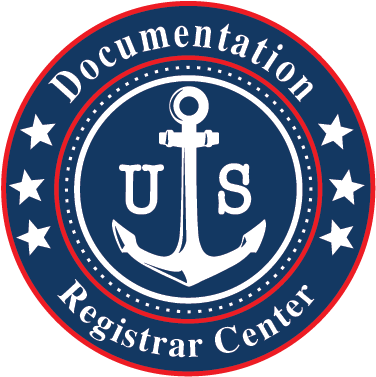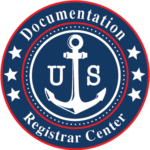183.1 Purpose and applicability.
This part prescribes standards and regulations for boats and associated equipment to which 46 U.S.C. Chapter 43 applies and to which certification requirements in Part 181 of this subchapter apply.
[CGD 85-098, 52 FR 19728, May 27, 1987]
183.3 Definitions.
Beam means the transverse distance between the outer sides of the boat excluding handles, and other similar fittings, attachments, and extensions.
Boat means any vessel –
- Manufactured or used primarily for noncommercial use;
- Leased, rented, or chartered to another for the latter’s noncommercial use; or
- Operated as an uninspected passenger vessel subject to the requirements of 46 CFR chapter I, subchapter C.
Full transom means a transom with a maximum width which exceeds one-half the maximum beam of the boat.
Length means the straight line horizontal measurement of the overall length from the foremost part of the boat to the aftermost part of the boat, measured from end to end over the deck excluding sheer, and measured parallel to the centerline. Bow sprits, bumpkins, rudders, outboard motor brackets, handles, and other similar fittings, attachments, and extensions are not included in the measurement.
Monohull boat means a boat on which the line of intersection of the water surface and the boat at any operating draft forms a single closed curve. For example, a catamaran, trimaran, or a pontoon boat is not a monohull boat.
Motorwell means any arrangement of bulkheads or structures that prevents water from entering the passenger carrying area of the boat through any cutout area in the transom for mounting an outboard motor.
Motorwell height means the vertical distance from the lowest point of water ingress along the top of the motorwell to a line representing a longitudinal extension of the centerline of the boat’s bottom surface, excluding keels. This distance is measured as a projection on the centerline plane of the boat. See Figure 183.3.
Permanent appurtenances means equipment that is mounted or fastened, so that it is not removable without the use of tools. Seats, inboard engines, windshields, helm stations, or hardtops are permanent appurtenances. Outboard motors, controls, batteries, and portable fuel tanks are not permanent appurtenances.
Remote steering means any mechanical assist device which is rigidly attached to the boat and used in steering the vessel, including but not limited to mechanical, hydraulic, or electrical control systems.
Sailboat means a boat designed or intended to use sails as the primary means of propulsion.
Sheer means the topmost line in a boat’s side. The sheer intersects the vertical centerline plane of the boat at the forward end and intersects the transom (stern) at the aft end. For the purposes of this definition, the topmost line in a boat’s side is the line defined by a series of points of contact with the boat structure, by straight lines at 45 degree angles to the horizontal and contained in a vertical plane normal to the outside edge of the boat as seen from above and which are brought into contact with the outside of the horizontal boat. A boat is horizontal when it is transversely level and when the lowest points at 40 percent and 75 percent of the boat’s length behind the most forward point of the boat are level.
Transom means the surface at the stern of a boat projecting or facing aft. The upper boundary of the transom is the line defined by a series of points of contact, with the boat structure, by straight lines at 45 degree angles to the horizontal and contained in a vertical longitudinal plane and which are brought into contact with the stern of the horizontal boat. A boat is horizontal when it is transversely level and when the lowest points at 40 percent and 75 percent of the boat’s length behind the most forward point of the boat are level.
Transom height means the vertical distance from the lowest point of water ingress along the top of the transom to a line representing a longitudinal extension of the centerline of the boat’s bottom surface, excluding keels. This distance is measured as a projection on the centerline plane of the boat. See Figure 183.3.
Vessel includes every description of watercraft, other than a seaplane on the water, used or capable of being used as a means of transportation on the water.
Figure 183.3 – Transom and Motorwell Height

[CGD 73-250, 40 FR 43856, Sept. 23, 1975, as amended by CGD 75-176, 42 FR 2681, Jan. 13, 1977; CGD 85-002, 51 FR 37574, Oct. 23, 1986; CGD 96-026, 61 FR 33669, June 28, 1996; 61 FR 36629, July 12, 1996; USCG-1999-5040, 67 FR 34760, May 15, 2002]
183.5 Incorporation by reference.
- Certain materials are incorporated by reference into this part with the approval of the Director of the Federal Register in accordance with 5 U.S.C. 552(a). To enforce any edition other than the one listed in paragraph (b) of this section, notice of change must be published in the Federal Register and the material made available to the public. All approved material is available for inspection at the Coast Guard Headquarters. Contact Commandant (CG-BSX-23), Attn: Recreational Boating Product Assurance Branch, U.S. Coast Guard Stop 7501, 2703 Martin Luther King Jr. Avenue SE., Washington, DC 20593-7501. It is also available at the National Archives and Records Administration (NARA). For information on the availability of this material at NARA, call 202-741-6030, or go to: http://www.archives.gov/federal_register/code_of_federal_regulations/ibr_locations.html. All approved material is available from the sources listed in paragraph (b) of this section.
- The materials approved for incorporation by reference in this part, and the sections affected are:
| Air Movement and Control Association, 30 W. University Drive, Arlington Heights, IL 60004: | |
| AMCA 210-74: Laboratory Methods of Testing Fans for Ratings – 1974 | § 183.610 |
| American Boat and Yacht Council, Inc., 613 Third Street Suite 10, Annapolis, Maryland 21403: | |
| ABYC A-16 Electric Navigation Lights-1997 | § 183.810 |
| American Society for Testing and Materials, 100 Barr Harbor Drive, West Conshohocken, PA 19428-2959: | |
| ASTM D 471-96, Standard Test Method for Rubber Property – Effect of Liquids | §§ 183.114; 183.516; 183.607; 183.620 |
| ASTM D 1621-94, Standard Test Method for Compressive Properties of Rigid Cellular Plastics | § 183.516 |
| ASTM D 1622-93, Standard Test Method for Apparent Density of Rigid Cellular Plastics | § 183.516 |
| ASTM D 2842-97, Standard Test Method for Water Absorption of Rigid Cellular Plastics | § 183.114 |
| Institute of Electrical and Electronics, Engineers, Inc., 445 Hoes Lane, Piscataway, NJ 08854: | |
| IEEE 45 IEEE Recommended Practice for Electrical Installations on Shipboard – 1983. Cable Construction | § 183.435 |
| National Fire Protection Association, 1 Batterymarch Park, Quincy, MA 02269: | |
| NFPA No. 70 National Electrical Code – 1987. Articles 310 & 400 | § 183.435 |
| Military Specifications and Standards, Standardization Documents Order Desk, Building 4D, 700 Robbins Avenue, Philadelphia, PA 19111-5094; https://assist.daps.dla.mil/quicksearch/ | |
| MILSPEC-P-21929B Plastic Material, Cellular Polyurethane, Foam-In-Place, Rigid – 1970 | § 183.516 |
| Society of Automotive Engineers, Inc., 400 Commonwealth Drive, Warrendale, PA 15096: | |
| SAE J378 Marine Engine Wiring – 1984 | § 183.430 |
| SAE J557 High Tension Ignition Cable – 1968 | § 183.440 |
| SAE J1127 Battery Cable – 1980 | § 183.430 |
| SAE J1128 Low Tension Primary Cable – 1975 | § 183.430 |
| SAE J1527DEC85 Marine Fuel Hoses – 1985 | § 183.540 |
| Underwriters Laboratories, Inc. (UL), 12 Laboratory Drive, Research Triangle Park, NC 27709-3995: | |
| UL 1114 Marine (USCG Type A) Flexible Fuel Line Hose – 1987 | § 183.540 |
| UL 1128 Marine Blowers – 1977 | § 183.610 |
| UL 1426 Cables for Boats – 1987 | § 183.435 |
[CGD 87-009, 53 FR 36971, Sept. 23, 1988, as amended by CGD 96-026, 61 FR 33670, June 28, 1996; USCG-1999-5151, 64 FR 67176, Dec. 1, 1999; USCG-2000-7223, 65 FR 40059, June 29, 2000; USCG-1999-6580, 66 FR 55091, Nov. 1, 2001; 69 FR 18803, Apr. 9, 2004; USCG-2004-18057, 69 FR 34926, June 23, 2004; USCG-2008-0179, 73 FR 35024, June 19, 2008; USCG-2010-0351, 75 FR 36288, June 25, 2010; USCG-2014-0410, 79 FR 38449, July 7, 2014]

